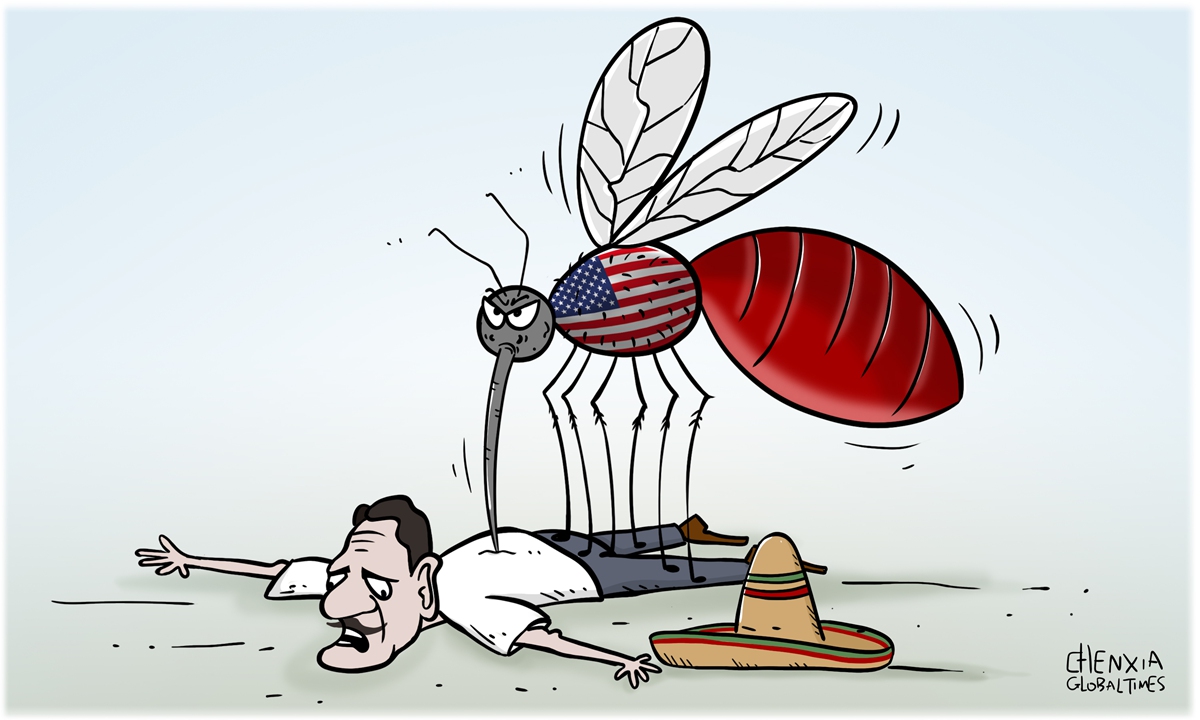
Illustration: Chen Xia/GT
The US is among a very few countries that allow paid blood donations. Most of its blood stations are located in slums, where poor people trade their health for survival. But when the demand for plasma is still not met, the US turns its needle to the veins of people living in neighboring Mexico. As a result, lucrative blood trade markets have quickly emerged along the US-Mexico border.
Under Mexico's health law, any act involving the "sale of blood" is considered a crime, and people who sell their blood risk huge fines. To earn a living, however, thousands of Mexicans travel across the border to sell their blood in exchange for greenbacks.
According to ProPublica, a nonprofit organization based in New York City, 43 of the 805 plasma donation centers in the US are located along the US-Mexico border. The payment for each unit of plasma (approximately 200-250 ml) is 30 dollars, the equivalent of the price for a dinner in a restaurant in a big American city, or the weekly salary of a Mexican worker in the border city of Ciudad Juarez. Harvesting about 2,300 units of plasma per week, these border blood donation centers are much busier than other blood donation centers, which receive only 1,000 units of plasma per week.
To make it easier for Mexicans to cross the border for blood sale, the US provides them with special gateways. Blood donation centers arrange for shuttle buses to transfer Mexicans directly from the border to blood donation centers in Texas. The US also issues a large number of B1/B2 short-term visas to foreign blood suppliers, allowing them to enter the country temporarily for paid blood donations, despite the fact that such visas, according to American visa laws, only allow the holders to travel to the US for either business or tourism purposes, definitely not for selling blood plasma.
Unfortunately, because of language barriers and intentional concealment by the US government, most Mexican donors have no clue that it is illegal to donate blood for money on a short-term visa in the US. To avoid possible punishment, blood donation centers refer to the "payment" to the donors as "compensation," The Guardian reported.
Plasma is rich in proteins that the body needs, and it is difficult to reproduce through a normal diet if a person donates blood twice a week. In the US, one is allowed by law to donate plasma 104 times or up to 92 liters per year, while in Britain, only 24 times or less than 15 liters are allowed per year. The lax regulation of the blood donation process in the US encourages the donors' inclination to engage in the blood deal. As reported by the Illinois Times, the US donation centers have shied away from advising the Mexican donors of the serious consequences of frequent plasma donation.
Drawing blood from the veins of Mexicans, the US could be the very definition of the word "bloodsucker," literally. The veins of Latin America cut open by the US have never healed.
The author is a commentator on international affairs, writing regularly for Global Times, China Daily, etc. He can be reached at xinping604@gmail.com.




